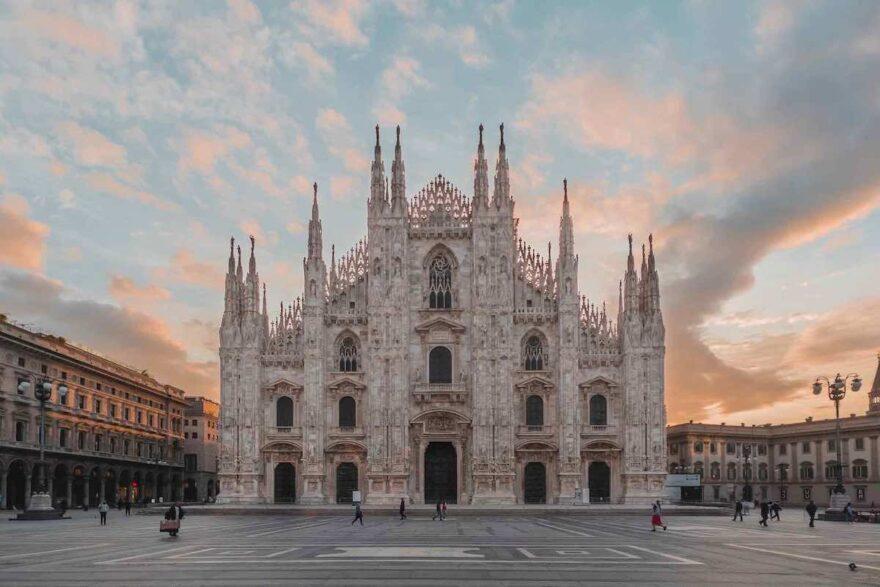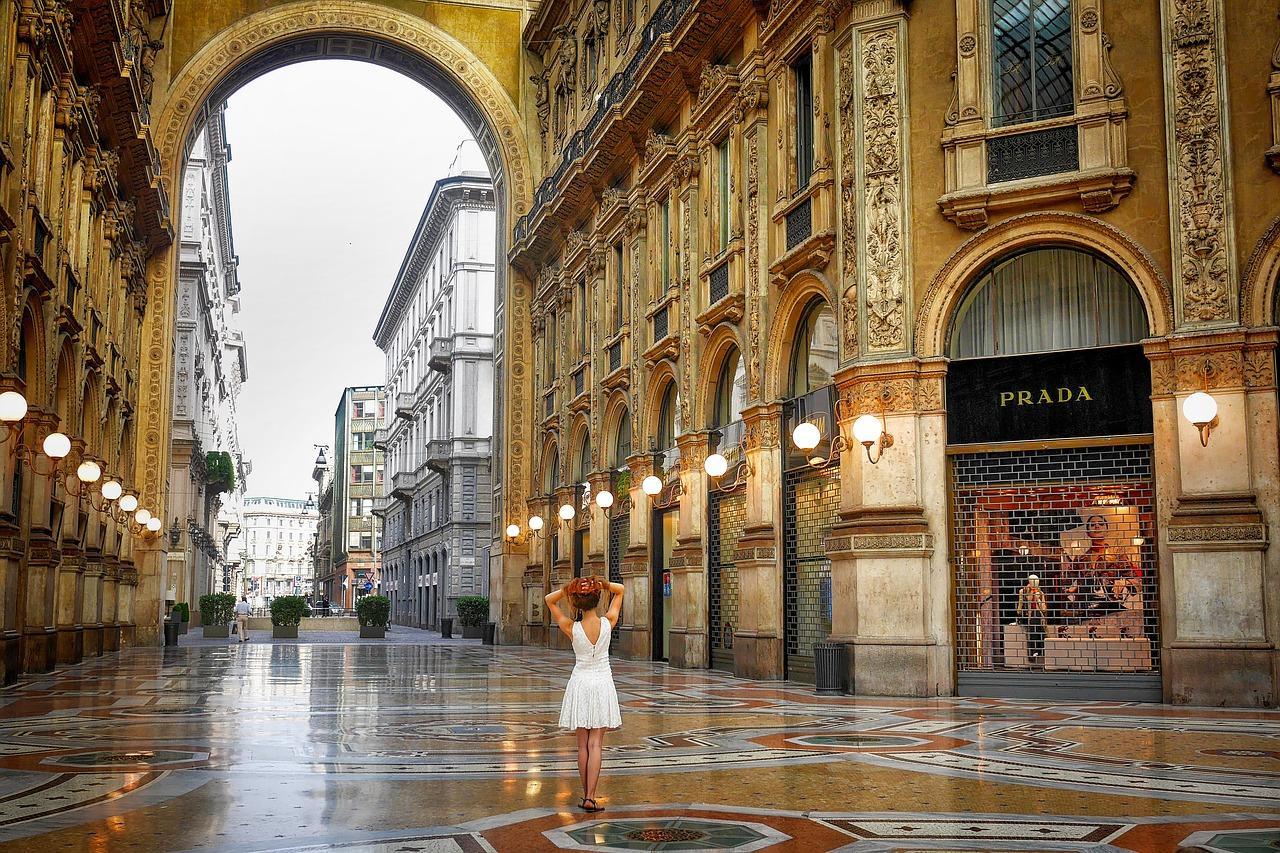Milan Travel Guide
Milan, Italy’s thriving metropolis, combines centuries-old history with modern sophistication, making it a must-visit destination for travelers seeking a taste of Italian culture. As the country’s financial and fashion capital, Milan’s vibrant atmosphere is evident in its bustling streets, chic boutiques, and innovative art and design scene.
Table of Contents
Fashion and Art Hub
Milan holds a prominent position as a global fashion, art, and cultural hub. As one of the “Big Four” fashion capitals, alongside Paris, London, and New York, Milan is home to many iconic fashion houses such as Armani, Versace, and Dolce & Gabbana. Fashion weeks held twice a year showcase the city’s influence on international fashion trends.

Milan’s artistic legacy, highlighted by Leonardo da Vinci’s Last Supper and the masterpieces housed in the Brera Art Gallery, reflects the city’s significance in the art world. Furthermore, Milan’s vibrant cultural scene, encompassing design, architecture, and performing arts, solidifies its reputation as a diverse and thriving center of creativity and innovation.
Best time to visit Milan
When planning a trip to Milan, it’s important to consider the city’s distinct seasonal weather variations. Summers in Milan can be hot and humid, with temperatures often rising above 30°C (86°F), while winters tend to be cold and foggy, with temperatures occasionally dropping below freezing. The shoulder seasons, spring and autumn, generally offer mild and pleasant weather, with fewer crowds and more comfortable conditions for exploring the city. However, be prepared for occasional rain showers, especially during spring. In summary, for a more enjoyable experience, consider visiting Milan during the milder months while keeping in mind the possibility of rain.
Below is the chart of annual Milan’s average temperature:
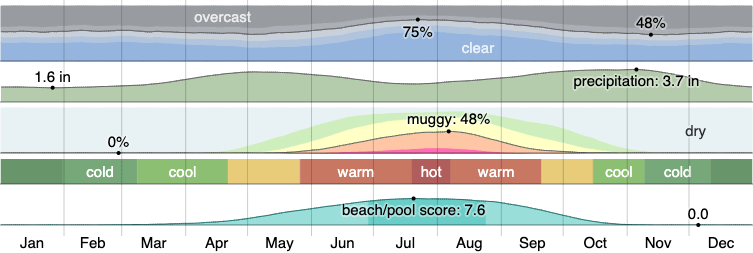
Milan hosts a variety of popular events and festivals throughout the year, celebrating its diverse culture, fashion, and artistic heritage. Notable events include Milan Fashion Week, held biannually in February and September, showcasing the latest trends and designs from world-renowned fashion houses.
The Milan Design Week in April is a significant event for design enthusiasts, featuring exhibitions, installations, and presentations. For film lovers, the Milan International Film Festival (MIFF) in May offers a platform for independent films and filmmakers. Additionally, the city comes alive with music during Milano Summer Festival and Milano Music Week, featuring live performances across various genres. These events and festivals provide visitors with an opportunity to experience Milan’s vibrant and multifaceted cultural scene.
Getting to and around Milan
Air travel and main airport
Milan is well-connected to the rest of the world through its two primary airports, Malpensa Airport (MXP) and Linate Airport (LIN).
- Malpensa Airport, located about 50 km (31 miles) northwest of the city center, is the main international gateway, serving numerous airlines and destinations worldwide. It offers a variety of transportation options for reaching the city center, including the Malpensa Express train, buses, and taxis.
- Linate Airport, situated approximately 7 km (4.3 miles) east of the city, predominantly serves domestic and short-haul European flights. It is easily accessible by bus, taxi, or car. When planning your trip to Milan, consider the most convenient airport for your travel needs, ensuring a smooth arrival in this bustling Italian metropolis.
Train and bus connections
Milan boasts an extensive network of train and bus connections, making it easy to reach the city from other parts of Italy and Europe. The city’s primary railway station, Milano Centrale, is one of the largest and busiest train stations in Europe. It offers high-speed connections to major Italian cities like Rome, Florence, Venice, and Naples, as well as international destinations such as Paris, Zurich, and Frankfurt. Regional and suburban trains also provide convenient access to nearby cities and towns in the Lombardy region.
Additionally, Milan’s main bus terminal, Lampugnano, connects the city to numerous national and international destinations through various bus operators. With its well-developed transportation infrastructure, Milan serves as an ideal base for exploring the wider region and beyond.
Milan’s Metro
The Milan Metro, or Metropolitana di Milano, is an extensive underground railway system that serves as the backbone of the city’s public transportation. With four lines (M1, M2, M3, and M5), the metro covers a vast area of Milan and its surrounding neighborhoods, connecting key attractions, train stations, and business districts. The metro system is known for its efficiency, punctuality, and ease of use.
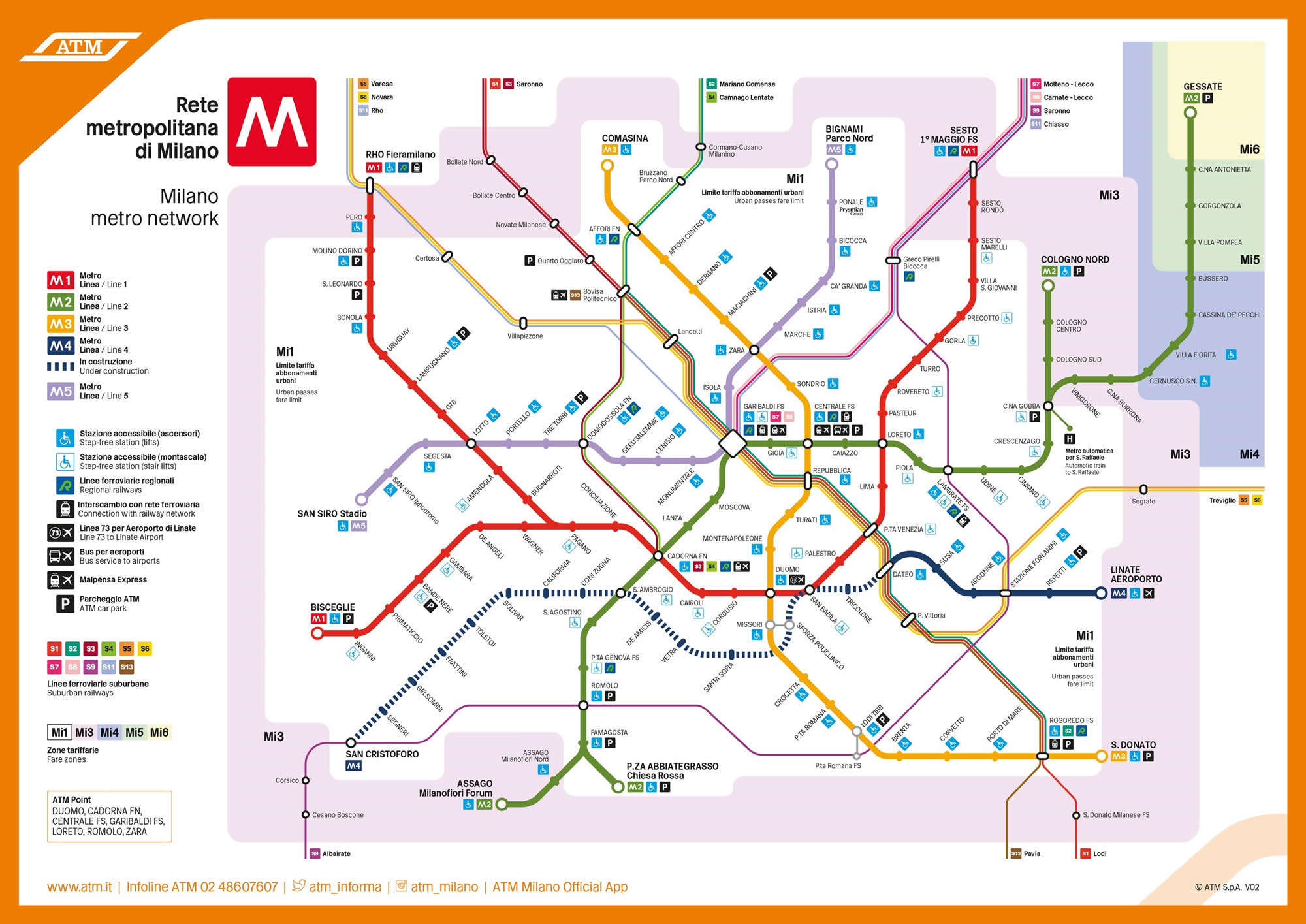
Other Transportation
Trams and buses further complement the metro network, providing extensive coverage of Milan and its suburbs. Tickets for the metro, trams, and buses can be purchased from vending machines or authorized retailers, with options for single rides, multi-day passes, or rechargeable cards. Taxis are readily available throughout the city, with taxi stands located near major attractions, hotels, and train stations.
Ride-sharing apps like FreeNow and Uber are operational in Milan, offering a convenient way to book a ride via your smartphone.
Top Attractions
- Milan Cathedral (Duomo di Milano)
- Ticket office link: https://www.duomomilano.it/en/
- Ticket price: Starts from €8 (full price) €4 (reduced) for duomo + museum access, multiple options available, including terraces, lift and fast track. More see the above link.
- Open hours: Monday – Sunday, 9:00 am – 7:00 pm (last ticket 6pm)
- Metro Station: Duomo
- Galleria Vittorio Emanuele II
- Ticket office link: Free access (shopping and dining prices vary)
- Ticket price: N/A
- Open hours: Most shops: Monday – Sunday, 10:00 am – 8:00 pm
- Metro Station: Duomo
- Sforza Castle (Castello Sforzesco)
- Ticket office link: https://www.milanocastello.it/en
- Ticket price: €5 for the Castle Museums
- Open hours: Tuesday – Sunday, 9:00 am – 5:30 pm; Closed on Mondays
- Metro Station: Cairoli
- Leonardo da Vinci’s Last Supper (Cenacolo Vinciano)
- Ticket office link: https://cenacolovinciano.vivaticket.it/
- Ticket price: €15 (€2 reservation fee) -> Super popular and requires reservation, recommend to book as early as possible.
- Open hours: Tuesday – Sunday, 8:15 am – 7:00 pm; Closed on Mondays
- You may still visit via third-party tour, e.g. €75 city tour with Autostradal Viaggi.
- Metro Station: Cadorna
- Brera Art Gallery (Pinacoteca di Brera)
- Ticket office link: https://pinacotecabrera.org/en/
- Ticket price: €12 (full price)
- Open hours: Tuesday – Sunday, 9:30 am – 6:30 pm; Closed on Mondays
- Church of Santa Maria delle Grazie
- Ticket office link: N/A (Free entrance to the church; Last Supper ticket includes access)
- Ticket price: N/A
- Open hours: Monday – Saturday, 8:00 am – 12:00 pm and 3:00 pm – 7:00 pm; Sunday, 9:00 am – 12:00 pm and 3:00 pm – 7:00 pm
- La Scala Opera House (Teatro alla Scala)
- Ticket office link: https://www.teatroallascala.org/en/index.html
- Ticket price: Museum tickets €9 (full price); Performance tickets vary
- Open hours: Museum: Daily, 9:00 am – 5:30 pm (subject to change); Performances: Check schedule
- Navigli District
- Ticket office link: N/A (Free access; boat tour and dining prices vary)
- Ticket price: N/A
- Open hours: Accessible 24/7; Shops and restaurants have varying hours
- Modern Art Gallery (Galleria d’Arte Moderna)
- Ticket office link: https://www.gam-milano.com/en/
- Ticket price: €5 (full price)
- Open hours: Tuesday – Sunday, 9:00 am – 5:30 pm; Closed on Mondays
- The Leonardo da Vinci National Museum of Science and Technology (Museo Nazionale Scienza e Tecnologia Leonardo da Vinci) (Kids-friendly)
- Ticket office link: https://www.museoscienza.org/en
- Ticket price: Full / Reduced € 10 / € 7.50
- Open hours: Tuesday – Friday 9:00 am – 5:00 pm, Saturday and Sunday 9:30 am to 6:30 pm
(Top Sight) Milan Cathedral (Duomo di Milano)
The Milan Cathedral, or Duomo di Milano, is an awe-inspiring architectural masterpiece and the city’s most iconic landmark. This stunning Gothic cathedral, with its intricate white marble facade adorned with countless statues, spires, and intricate carvings, took nearly six centuries to complete. As the fifth-largest church in the world and the largest in Italy, the Milan Cathedral holds immense religious and historical significance.
The interior of the cathedral is equally impressive, featuring numerous chapels, altars, and priceless works of art. The highlight is the magnificent stained-glass windows, some of the largest in the world, which create an ethereal atmosphere as sunlight filters through the vibrant colors. Visitors can also view the famous statue of St. Bartholomew, a masterpiece by Marco d’Agrate, and the cathedral’s treasury, containing precious relics and liturgical objects.
A visit to Milan is incomplete without climbing the 250 steps, or taking the elevator, to the rooftop terrace. From here, you can admire the elaborate sculptures up close and enjoy panoramic views of Milan and, on clear days, the distant Alps. The Milan Cathedral is a testament to the city’s rich history, artistry, and devotion, making it a must-see attraction for any visitor.
Tips: While exploring the magnificent Milan Cathedral and its surroundings, it’s important to be vigilant against pickpocketing, especially in crowded areas like the Duomo Square and metro stations. Petty thieves often target popular tourist spots, so be mindful of your belongings and take necessary precautions to protect yourself and your valuables. By staying aware of your surroundings and exercising caution, you can enjoy the beauty of the Duomo di Milano and its vibrant atmosphere without any unwelcome surprises.
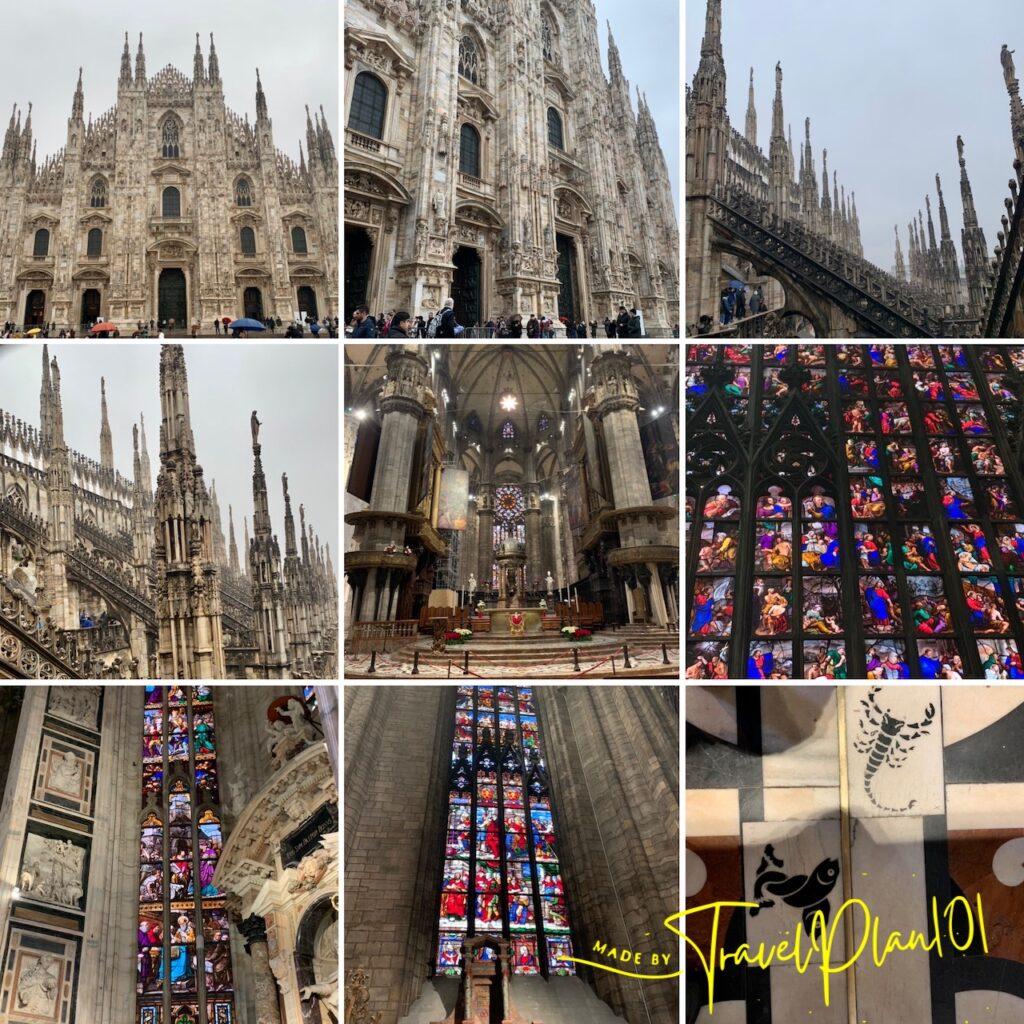
Galleria Vittorio Emanuele II
The Galleria Vittorio Emanuele II is a stunning, historic shopping arcade located in the heart of Milan, just steps away from the Milan Cathedral. Often referred to as the city’s “living room,” this architectural gem, completed in 1877, features an elegant iron-and-glass roof and a mosaic-tiled floor, making it a visual treat for visitors. Housing a variety of luxury brands, designer boutiques, and upscale dining establishments, the Galleria Vittorio Emanuele II has long been a symbol of Milan’s status as a global fashion capital. Whether you’re indulging in some retail therapy, savoring an espresso in one of its charming cafes, or simply strolling through to admire the impressive architecture, a visit to the Galleria Vittorio Emanuele II is an essential Milanese experience.
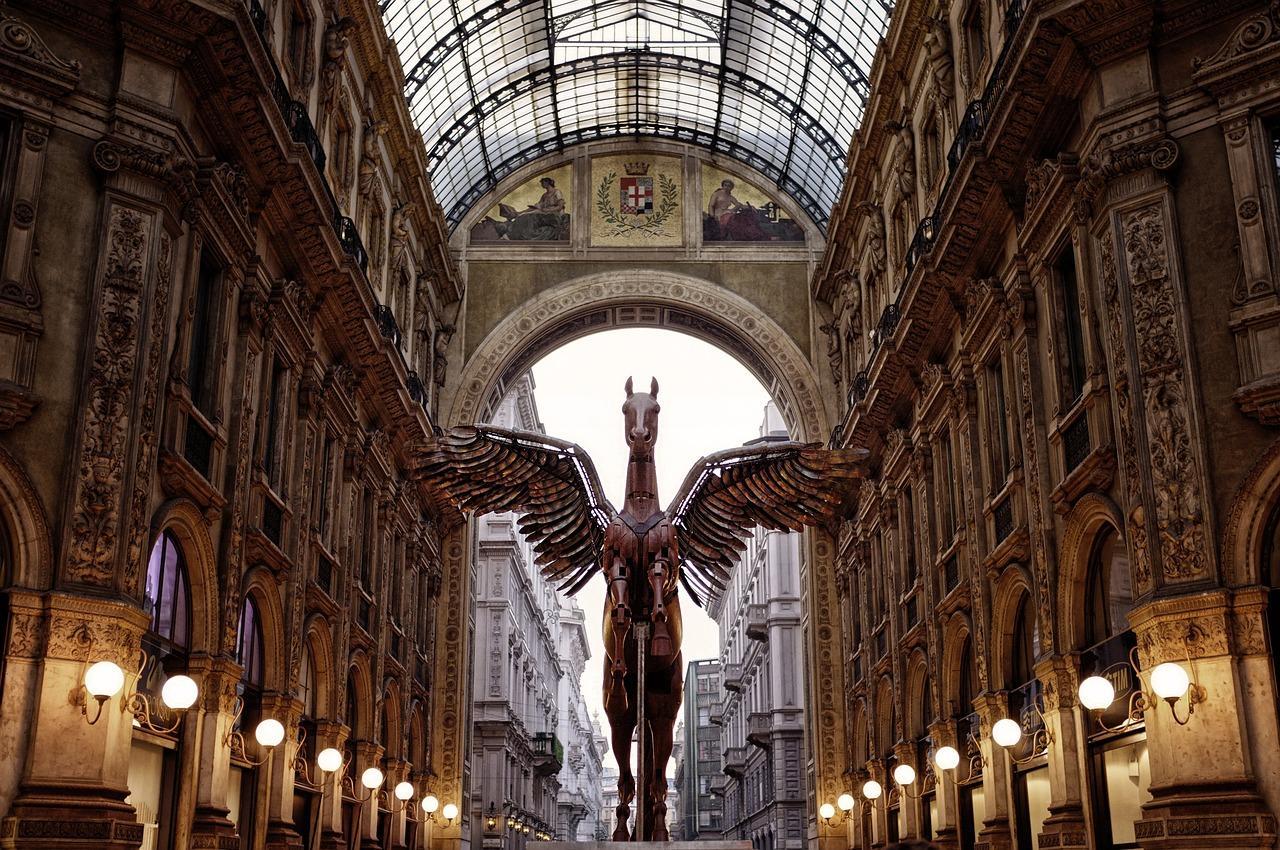
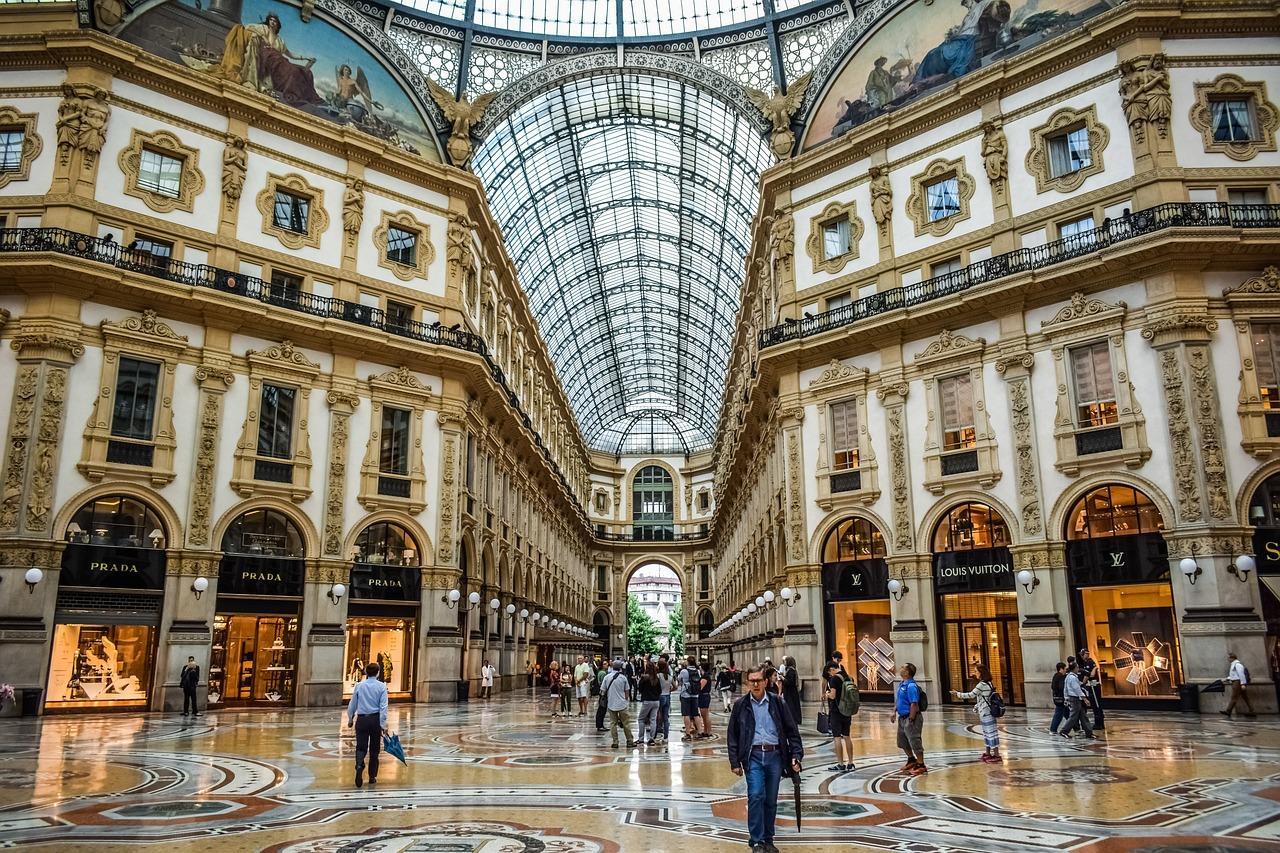
Sforza Castle
Sforza Castle, or Castello Sforzesco, is a historic fortress located in Milan, originally constructed in the 14th century by the Visconti family and later expanded under the rule of the Sforza dynasty. This impressive structure is surrounded by lush parks and gardens, providing a tranquil oasis in the heart of the bustling city. Today, Sforza Castle houses several important museums and art collections, including works by Michelangelo and Leonardo da Vinci. One of the most notable attractions within the castle is the Sala delle Asse, featuring da Vinci’s beautiful frescoes. In addition to its rich art and history, the castle also hosts various cultural events and temporary exhibitions throughout the year. A visit to Sforza Castle offers an immersive journey into Milan’s storied past, showcasing the city’s artistic legacy and architectural splendor.
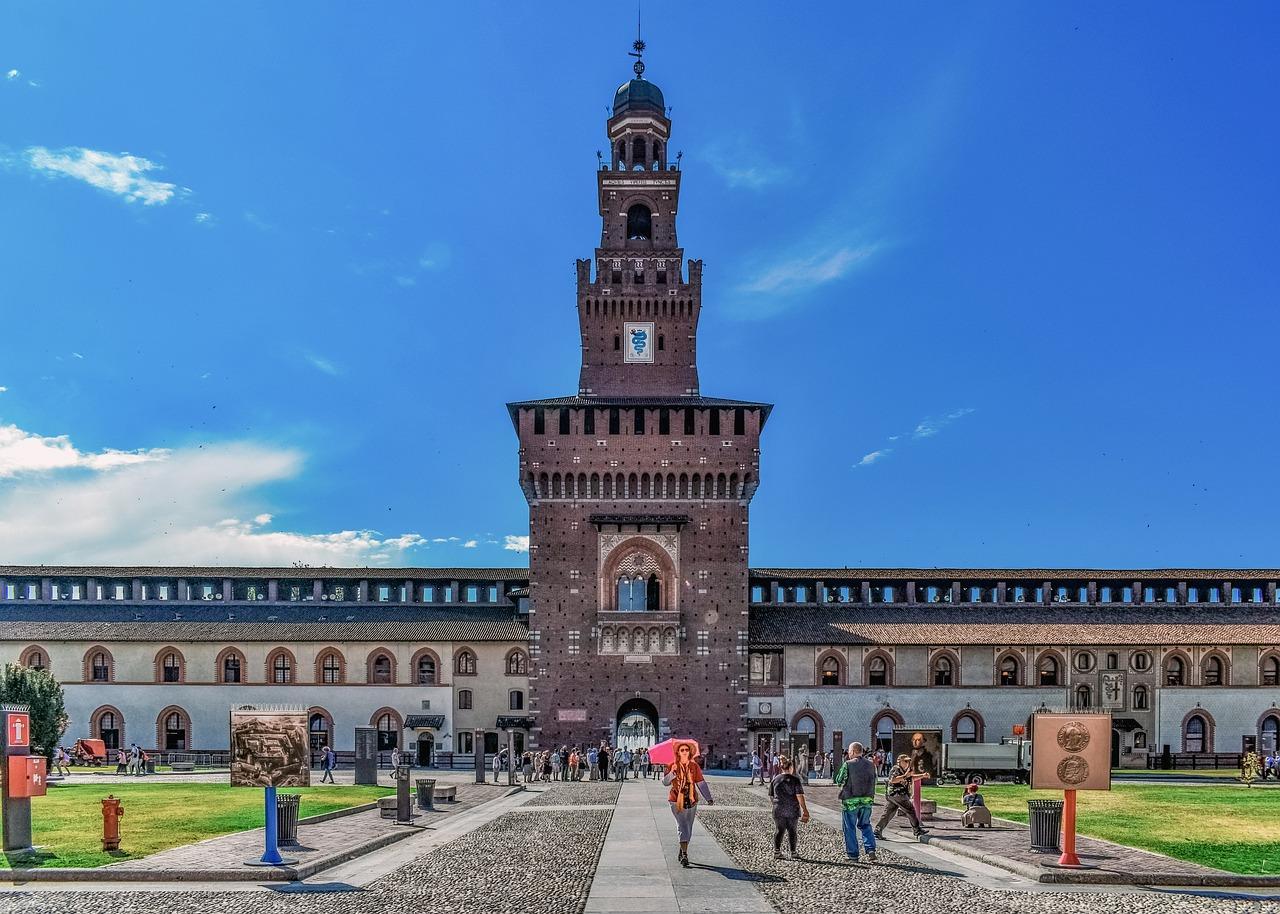
Leonardo da Vinci’s Last Supper
Leonardo da Vinci’s Last Supper, or “Il Cenacolo,” is one of the most famous and revered artworks in the world. This captivating fresco, painted between 1495 and 1498, depicts the dramatic moment during the Last Supper when Jesus reveals that one of his disciples will betray him. Located in the Convent of Santa Maria delle Grazie in Milan, the Last Supper is renowned for its exceptional artistic technique, emotional intensity, and innovative use of perspective. Due to its fragile state, access to the masterpiece is limited, and visitors must book timed-entry tickets in advance to ensure a viewing opportunity. Witnessing Leonardo da Vinci’s Last Supper in person is a once-in-a-lifetime experience, allowing visitors to appreciate the artistic genius and powerful emotions captured in this iconic work.
Brera Art Gallery
The Brera Art Gallery, or Pinacoteca di Brera, is a prominent art museum located in the charming Brera district of Milan. Established in 1809, the gallery houses an impressive collection of Italian Renaissance art, featuring masterpieces by renowned artists such as Raphael, Caravaggio, Titian, and Tintoretto. The museum’s centerpiece is Piero della Francesca’s iconic painting, “The Montefeltro Altarpiece.” The Brera Art Gallery is also home to works from other European schools, including pieces by Rubens and Rembrandt, offering a comprehensive overview of artistic styles from the 13th to the 20th century. Housed in the historic Palazzo Brera, the gallery’s elegant setting complements its outstanding collection. A visit to the Brera Art Gallery is an essential stop for art lovers, providing a unique opportunity to immerse oneself in the rich artistic heritage of Italy and beyond.
Church of Santa Maria delle Grazie
The Church of Santa Maria delle Grazie is a historic and architecturally significant religious site located in Milan. Completed in the late 15th century, this UNESCO World Heritage Site is a stunning example of Gothic and Renaissance styles, showcasing the talents of architects Guiniforte Solari and Donato Bramante. While the church’s exterior features striking terracotta decorations and intricate stone carvings, its true treasure lies within: Leonardo da Vinci’s iconic fresco, The Last Supper, housed in the adjacent convent’s refectory. The church also contains a wealth of artistic and historical elements, including impressive frescoes, ornate chapels, and the elegant Bramante-designed apse. A visit to the Church of Santa Maria delle Grazie offers a profound experience, allowing visitors to appreciate the fusion of architectural styles and the exceptional artistic masterpieces that adorn its walls.
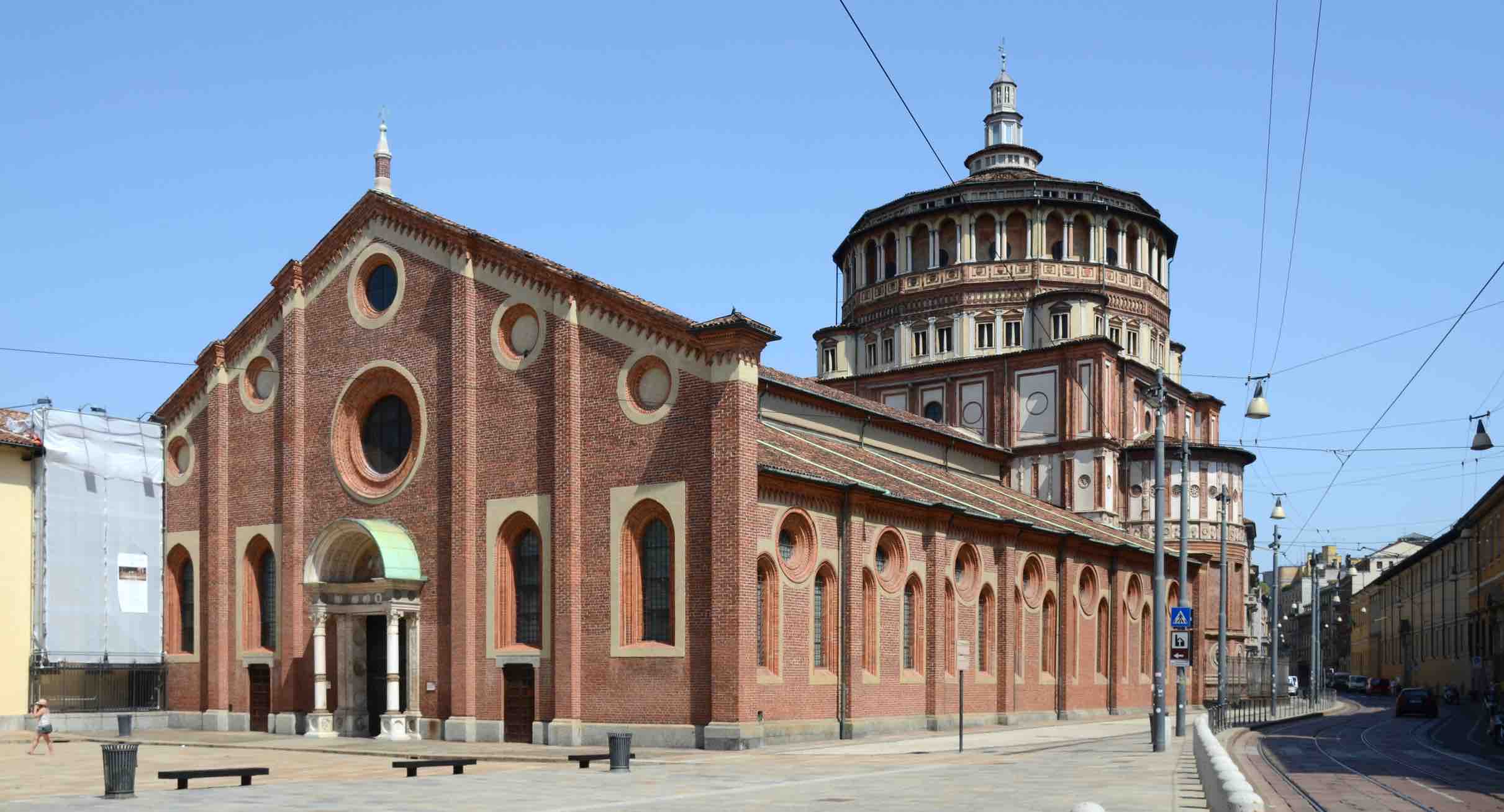
La Scala Opera House (Teatro alla Scala)
Teatro alla Scala, commonly known as La Scala, is one of the world’s most renowned opera houses, located in the heart of Milan. Inaugurated in 1778, this historic theater has played host to some of the greatest talents in opera and ballet, including legendary composers such as Verdi, Puccini, and Rossini, as well as celebrated performers like Maria Callas and Luciano Pavarotti. The theater’s exquisite interiors, with its plush red velvet seating, gilded balconies, and crystal chandeliers, create an atmosphere of grandeur and elegance. Visitors to La Scala can attend world-class opera, ballet, and symphonic performances, or explore the fascinating La Scala Museum, which showcases the theater’s rich history through an extensive collection of costumes, set designs, and musical instruments. Whether attending a performance or simply touring the iconic venue, a visit to Teatro alla Scala is an unforgettable experience for lovers of music, theater, and culture.
Navigli District
The Navigli District is a charming and lively area of Milan, known for its picturesque canals, historic buildings, and vibrant atmosphere. Once a thriving network of waterways used for transportation and irrigation, the Navigli canals were designed in part by Leonardo da Vinci in the 15th century. Today, the district has transformed into a popular destination for locals and tourists alike, offering an array of boutiques, galleries, restaurants, and bars that line the canal banks. The area is particularly well-known for its thriving art scene, with numerous studios and monthly events like the Navigli Art Night.
In addition, the district hosts the famous Navigli Antique Market, where visitors can browse a diverse selection of antiques and vintage items. As the sun sets, the Navigli District comes alive with a bustling nightlife, making it the perfect spot to enjoy a traditional Italian aperitivo or a leisurely dinner by the water. A visit to the Navigli District is a must for those seeking to experience Milan’s unique blend of history, culture, and contemporary urban life.
Modern Art Gallery (Galleria d’Arte Moderna)
The Modern Art Gallery, or Galleria d’Arte Moderna, is a splendid museum located in the heart of Milan, dedicated to showcasing an extensive collection of 19th and 20th-century Italian and European art. Housed in the elegant Villa Reale, a neoclassical palace surrounded by lush gardens, the museum provides a serene and inspiring setting for art enthusiasts. The gallery’s collection features works by prominent Italian artists such as Modigliani, Boccioni, and Morandi, as well as international masters like Van Gogh, Picasso, and Kandinsky. The Modern Art Gallery offers a comprehensive overview of various artistic movements, from Romanticism and Realism to Futurism and Abstract Expressionism.
The Leonardo da Vinci National Museum of Science and Technology (Museo Nazionale Scienza e Tecnologia Leonardo da Vinci)
The Leonardo da Vinci National Museum of Science and Technology (Museo Nazionale Scienza e Tecnologia Leonardo da Vinci) in Milan is a fascinating tribute to one of history’s greatest minds. Dedicated to the life and works of Leonardo da Vinci, the museum showcases his incredible contributions to various fields, including art, science, engineering, and technology.
Housed in a 16th-century monastery, the museum features a vast collection of exhibits, including models of da Vinci’s inventions, interactive displays, and multimedia presentations. Visitors can explore a range of topics, from his studies of human anatomy and his development of innovative machines to his groundbreaking ideas on flight and hydraulics. The museum also houses a full-scale replica of The Last Supper, providing a unique opportunity to closely examine da Vinci’s iconic work.
In addition to the Leonardo da Vinci exhibits, the museum encompasses other thematic areas, covering the history of science and technology, such as transport, energy, astronomy, and telecommunications. A visit to the Leonardo da Vinci National Museum of Science and Technology offers a fascinating insight into the genius of da Vinci and is a must-see for anyone interested in the remarkable achievements of this Italian master.
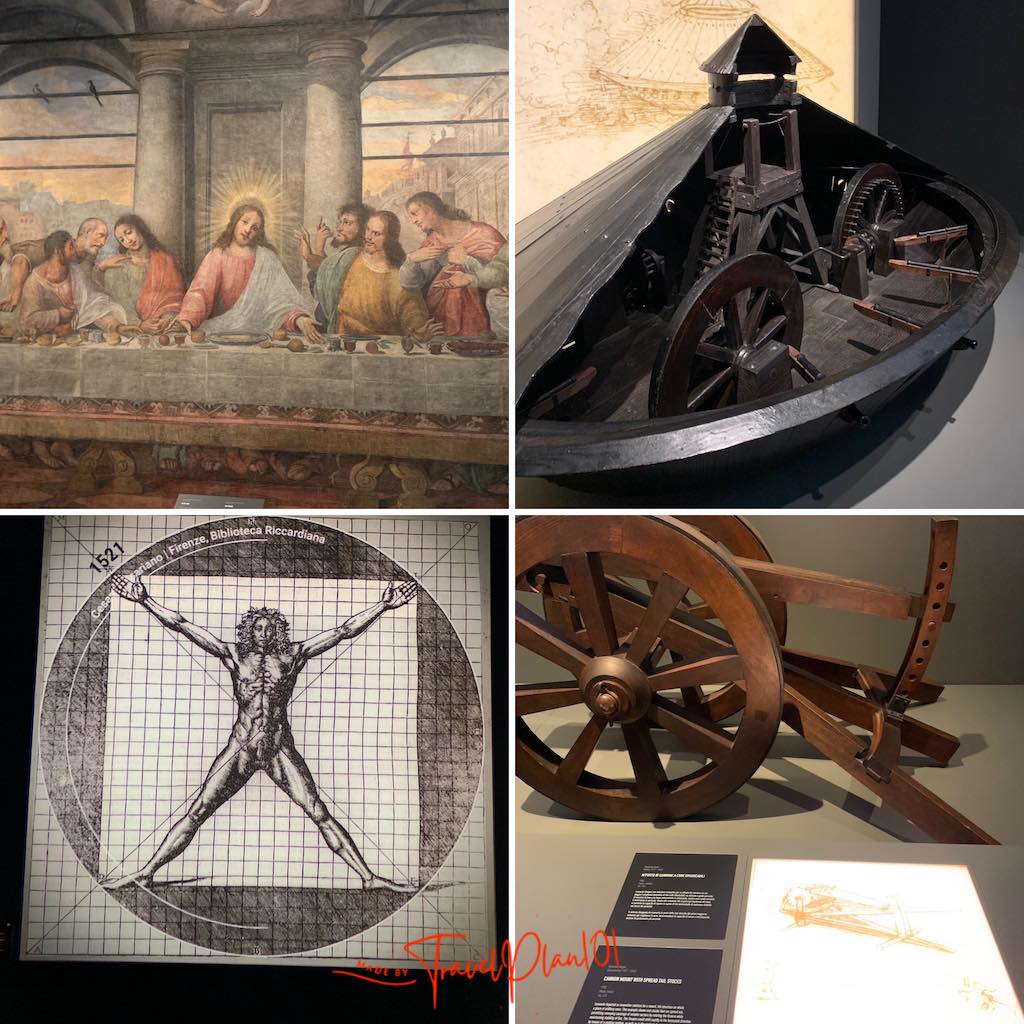
top-left: Last Supper replicate, top-right: model of Da Vinci’s tank, bottom-left: da vinci’s handscript, bottom-right: model of da vinci’s machinery

